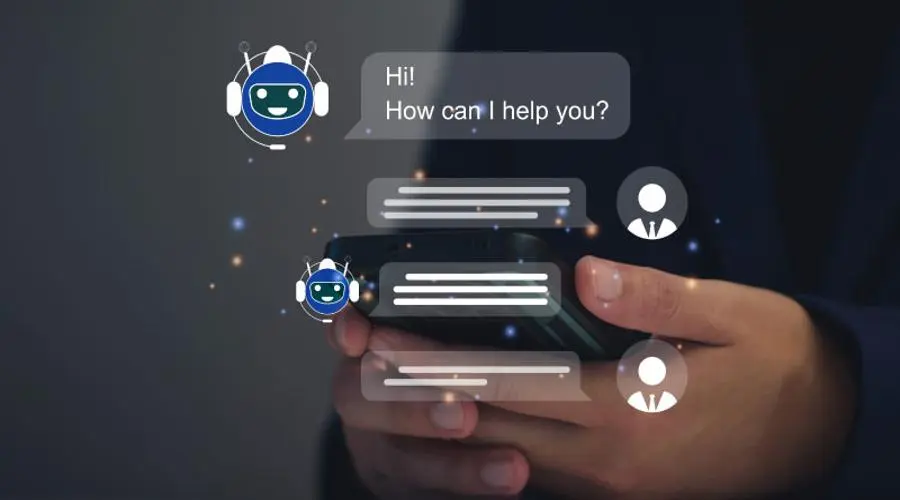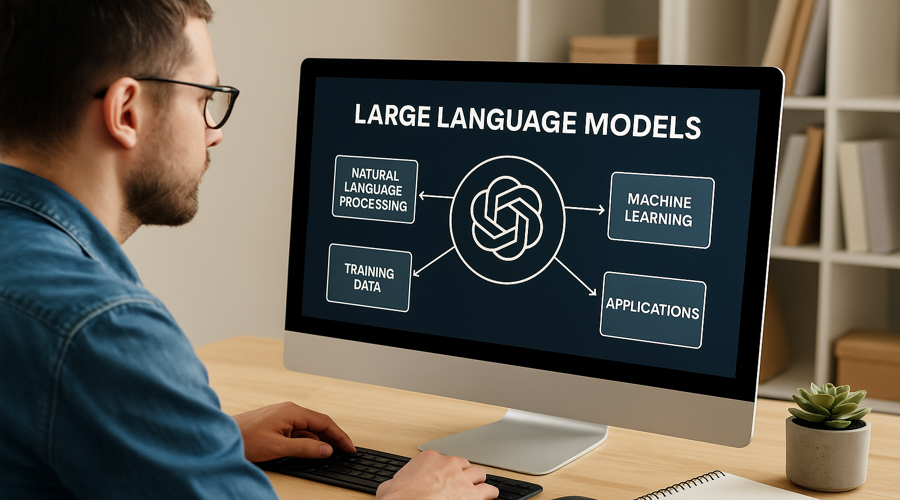Generative AI harnesses sophisticated machine-learning algorithms to create fresh, original content—everything from compelling marketing copy and striking visuals to authentic-sounding audio and practical software solutions. By identifying and applying complex patterns within your data, it simplifies creative and analytical tasks, delivers highly personalised experiences at scale and speeds up innovation across products and services. In this article, we’ll explore how generative AI works, chart the evolution of its core technologies, showcase its main advantages and applications, and outline key considerations for implementing it effectively in your business.
What is generative AI?
Imagine a system that studies your existing assets—customer feedback, brand guidelines, performance data—and then generates fresh, context-aware content on demand. Generative AI does exactly that. At its core, it uses advanced machine-learning techniques to learn statistical relationships within data and then synthesise new outputs that reflect those learned patterns without simply copying the source material. Key takeaways for business leaders: Customisation at scale Produce highly targeted messaging and designs for different customer segments without multiplying your workload. Speed and agility Generate dozens of campaign variants, product descriptions or report summaries in minutes. Cost efficiency Reduce dependence on external agencies and manual effort for routine creative tasks
How generative AI works
Generative AI operates in two primary phases:1. Learning phase
During training, models undergo self-supervised pre-training on massive, unlabelled datasets—such as text corpora, image collections or multimodal sources—using objectives like next-token prediction or masked-token reconstruction. This process enables the model to learn rich contextual representations that capture syntax, semantics and domain-specific nuances without needing manually annotated data.
2. Generation phase
Given a concise prompt (for example, “Draft a social-media post announcing our new service”), the model produces polished content by sampling from its learned representations and assembling outputs that align with your objectives. Throughout this process, safeguards such as curated training datasets, iterative human review and domain-specific fine-tuning ensure outputs remain on-brand and factually accurate.
Generative AI model architectures and how they have evolved
The evolution of generative AI spans several distinct waves of innovation, each building on the last to enhance creative and analytical capabilities:
2013–2016: Foundational Generative Models
Early breakthroughs demonstrated that AI could generate novel data, not just classify it. Variational Autoencoders (VAEs) introduced smooth latent spaces for design exploration, while Generative Adversarial Networks (GANs) used competitive networks to produce increasingly realistic images. Autoregressive architectures such as PixelCNN and audio-focused WaveNet proved the same principles in image and speech synthesis, laying the conceptual bedrock for all subsequent generative systems.
2017: The Transformer Era
The introduction of self-attention mechanisms removed the sequence-processing bottlenecks of earlier models, enabling a single pass to capture global context. Transformers rapidly became the standard for generating coherent text, code and other sequential data, and set the stage for large-scale language models.2018–2024: Scale and Adaptability
Models grew to billions of parameters, allowing few-shot and zero-shot adaptation to specialised domains with minimal additional data. This period saw the rise of enterprise-grade assistants and customisable AI agents that can draft detailed reports, handle customer queries and maintain brand consistency around the clock.2020+: Diffusion and Multimodal Advances
Diffusion-based techniques refined image, audio and video generation by iteratively denoising from random noise, offering greater stability and quality. Simultaneously, multimodal models began to integrate vision and language, allowing unified systems to understand images and text together—powering next-generation content creation suites.Present: Tool-Augmented, Reasoning-First Systems
The latest generation of models combines generative fluency with deterministic tool calls. By integrating external APIs, databases and calculators during content generation, these systems ensure factual accuracy and actionable outputs. This hybrid approach underpins autonomous AI agents capable of complex tasks such as contract drafting, spreadsheet reconciliation and support-ticket triage with enterprise-grade reliability.What generative AI can create
- Marketing assets: From taglines and ad copy to full campaign storyboards, all tailored to your brand voice.
- Visual designs: Logo concepts, product renders and social graphics generated to reflect campaign themes.
-
Executive reports: Automated data summaries, insights and trend analyses formatted to your corporate style. - Software prototypes: Code snippets, data-pipeline scripts and integration templates for rapid proof-of-concepts.Software prototypes
- Multimedia content: Video scripts, voice-over tracks and podcast outlines ready for production.
Benefits of generative AI
- Faster time-to-market: Launch new campaigns and offerings in days instead of weeks.
- Consistent brand experience: Maintain uniform tone, style and messaging across all channels.
- Optimised resource allocation: Redeploy creative and analytical teams to higher-value, strategic initiatives.
- Data-driven creativity: Leverage customer insights to generate content that resonates and converts.
- Continuous improvement: Feed performance data back into the model to refine outputs over time.
Use cases for generative AI
- Sales enablement: Auto-generate tailored proposals, pitch decks and RFP responses.
- Customer service: Deploy intelligent chat agents that resolve routine enquiries and surface upsell opportunities.
- Product development: Prototype UI/UX mock-ups and conduct rapid A/B testing at scale.
- Financial planning: Create scenario analyses, risk assessments and compliance documentation automatically.
- Regulatory compliance: Draft policies, contracts and audit reports aligned with evolving standards.
Challenges, limitations and risks
- Data governance: Maintain strict controls over training data to protect privacy and comply with regulations.
- Quality assurance: Implement review workflows to catch errors, biases or misaligned content.
- Integration complexity: Ensure seamless interoperability with existing enterprise systems and processes.
- Ethical considerations: Define clear usage policies to prevent misuse, protect intellectual property and uphold brand integrity.
- Scalability and cost: Balance model complexity and compute requirements against projected ROI and sustainability goals.
The future of generative AI
As generative AI continues to mature, businesses can expect several key advancements:Multimodal integration
Models will seamlessly handle text, images, audio and video within a single framework, enabling richer content creation and more natural interactions.On-device generation
Advances in model compression and optimisation will bring generative AI capabilities directly to smartphones and edge devices, reducing latency and enhancing data privacy.Explainability and control
New techniques for interpretability will allow organisations to understand and guide model outputs, ensuring transparency and regulatory compliance.Personal AI agents
Individuals and teams will use custom-trained agents that understand specific workflows and data, automating complex tasks from research synthesis to project management.Sustainable AI
Innovations in energy-efficient architectures and training methods will minimise environmental impact while maintaining performance.Democratisation of AI
User-friendly platforms and low-code interfaces will empower non-technical staff to leverage generative models, driving adoption across all business functions.Tighter governance frameworks
Industry standards and best practices will emerge, helping businesses manage ethical considerations, data security and intellectual property rights.Integration with IoT and real-time data
Generative AI will connect to live sensor feeds and enterprise systems, producing dynamic content and insights that reflect real-world conditions.Conclusion
By integrating generative AI today, you can gain a significant competitive edge, automating key processes, delivering personalised experiences at scale and driving faster growth. Whether you’re aiming to streamline marketing workflows, elevate customer support or accelerate product innovation, generative AI adapts to your unique business challenges. Ready to explore how generative AI can transform your operations and ROI? Nexmira is here to help you discover growth opportunities and elevate your business with the power of generative AI. Don’t fall behind your competitors, now is the time to talk about your business and find the right solution tailored to your needs.Get in touch with us today.Frequently asked questions:




